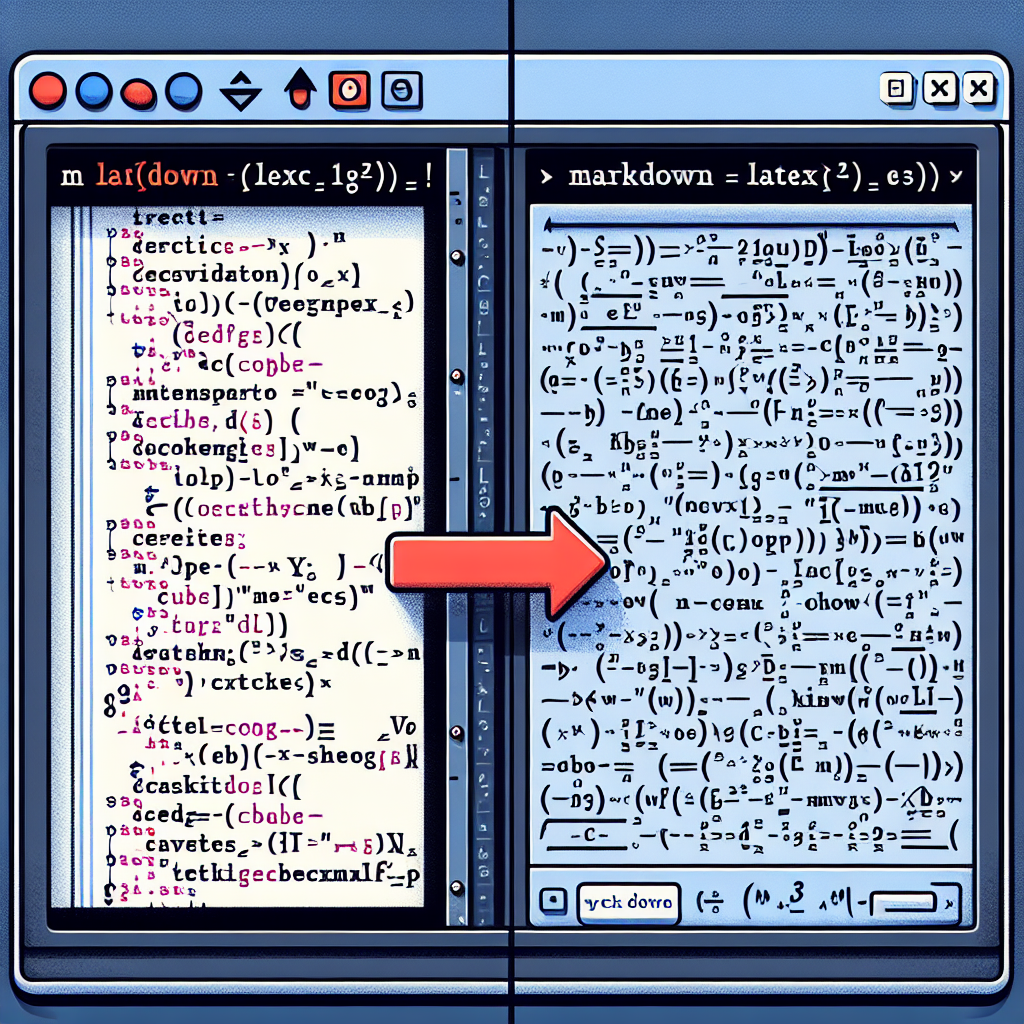From LaTeX to Markdown: A Conversion Guide
Converting LaTeX to Markdown simplifies reading and editing documents. Tools like Pandoc, online converters, or manual methods enable effective conversion, enhancing compatibility and collaboration.

"Explore our suite of free Markdown toolsto convert, format, and enhance your documents with ease."
Introduction
LaTeX is a powerful typesetting system widely used for writing scientific papers and technical documents. However, Markdown, being a lightweight markup language, is simpler and more readable, making it increasingly popular for creating web content. This article will discuss how to convert LaTeX documents to Markdown format.
Differences Between LaTeX and Markdown
- Complexity: LaTeX offers extensive control and rich formatting options, ideal for complex academic documents. Markdown focuses on simplicity and is commonly used for blogs, notes, and simple technical documents.
- Learning Curve: LaTeX has a steep learning curve, whereas Markdown is easy to grasp due to its simple syntax.
Why Convert?
- Readability: Markdown files are easier to read and edit.
- Compatibility: Many modern platforms, such as GitHub, Jekyll, and Hugo, natively support Markdown.
- Collaboration: Markdown's simplicity makes it great for team collaboration and version control.
Conversion Methods
-
Pandoc: Pandoc is a powerful document conversion tool that supports conversion between various formats, including LaTeX to Markdown. The following command performs the conversion:
pandoc input.tex -o output.mdPros: Efficient, supports multiple formats, high conversion quality.
Cons: Requires software installation, some specific LaTeX features may need manual adjustment.
-
Online Tools: Numerous online tools can convert LaTeX to Markdown, such as Overleaf and LaTeX2Markdown. Using these tools, you can simply upload your LaTeX file to get a Markdown output.
Pros: Convenient, no installation needed.
Cons: Relies on internet connectivity, potential format compatibility issues.
-
Manual Conversion: For simple documents, you can manually replace LaTeX syntax with Markdown syntax, for example, converting
\section{Title}to# Title.Pros: Complete control over the conversion process, suitable for small projects.
Cons: Time-consuming, prone to human error.
Considerations
- Formulas and Figures: Special formulas and figures in LaTeX may need extra handling in Markdown, using tools like MathJax or KaTeX to embed mathematical expressions.
- Citations and References: Markdown does not natively support complex citations. You can use BibTeX format combined with Pandoc's citation features.
Conclusion
Converting LaTeX documents to Markdown format can simplify document reading and editing, enhancing compatibility and collaboration. Using Pandoc, online tools, or manual methods, you can effectively achieve format conversion. Each tool and method has its pros and cons; selecting the appropriate tool and method can make the conversion process smoother.



Comments ()